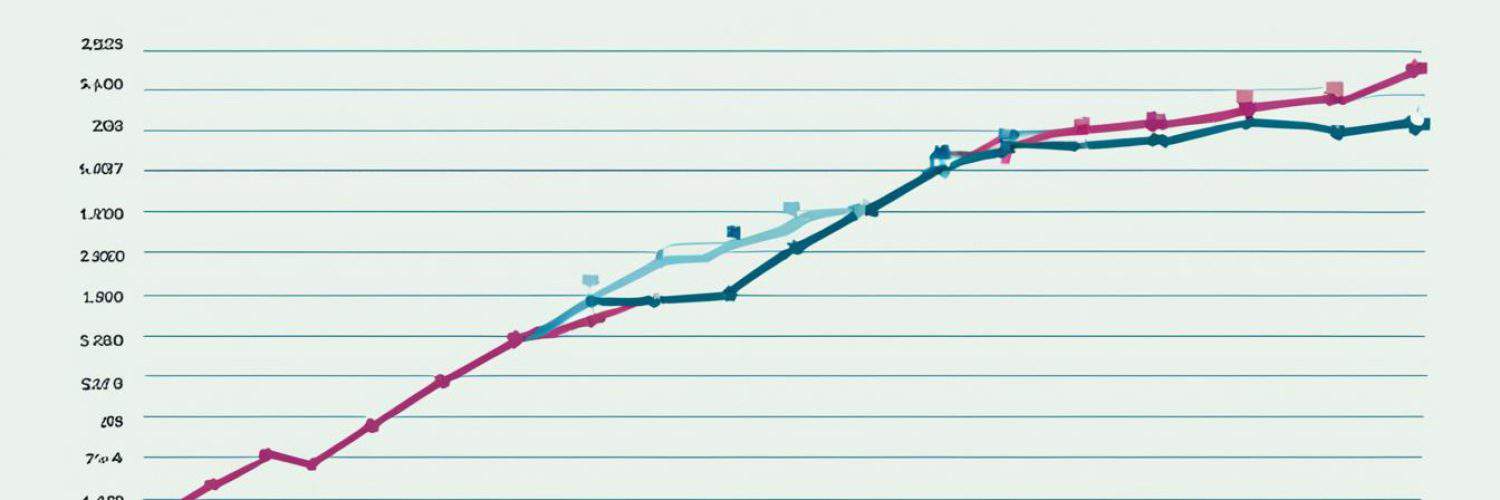Have you ever wondered why teenage pregnancy remains a persistent issue in the Philippines? Despite efforts to address the problem, teenage pregnancy rates have not shown significant decline over the years. What are the factors contributing to this trend? Are there effective prevention strategies in place?
In this article, we delve into the research about teenage pregnancy in the Philippines to gain a comprehensive understanding of the trends and factors involved. We explore the prevalence rates, causes, and effects of teenage pregnancy, as well as the prevention strategies and support programs available in the country. Let’s uncover the truth and explore possible solutions together.
Key Takeaways:
- The prevalence of teenage pregnancy in the Philippines has remained high with no significant decline over the years.
- Inadequate sex education, limited access to contraception, increasing cohabitation among adolescents, and misconceptions about sex contribute to high teenage pregnancy rates.
- Teenage pregnancy has significant socio-economic and health consequences for the adolescent mothers and their children.
- Prevention strategies and support programs are implemented in the Philippines to address teenage pregnancy.
- Trade policies can play a role in reducing teenage pregnancy by promoting women’s education and empowerment.
Teenage Pregnancy Rates in the Philippines
Despite efforts to address the issue, teenage pregnancy rates in the Philippines have remained alarmingly high, according to data from the Philippine Demographic and Health Surveys conducted between 1993 and 2013. These surveys collected information from women aged 15-24 who had experienced at least one pregnancy. The prevalence of teenage mothers aged 15-18 with repeated pregnancies (RP) or repeated births (RB) showed only minimal improvement over the span of two decades.
| Year | Prevalence of Repeated Pregnancies (RP) | Prevalence of Repeated Births (RB) |
|---|---|---|
| 1993 | 20.39% | 8.49% |
| 2013 | 18.06% | 7.80% |
These statistics reveal a persistently high incidence of teenage pregnancies in the Philippines, with marginal decreases in the rates of repeated pregnancies and births among adolescents aged 15-18. Despite ongoing efforts to address this issue, it is clear that more actions need to be taken to effectively reduce teenage pregnancy rates in the country.
Factors Contributing to Teenage Pregnancy
Teenage pregnancy rates in the Philippines have been influenced by various factors. These include inadequate sex education, limited access to contraception and family planning services, increasing cohabitation among adolescents, and misconceptions surrounding sex and contraception influenced by religious beliefs and societal norms. These underlying factors need to be addressed comprehensively to tackle the issue of teenage pregnancies effectively.
Impact of Teenage Pregnancy
“Teenage pregnancy has significant consequences for both the adolescent mothers and their children.”
The effects of teenage pregnancy extend beyond the immediate health risks and social challenges. Adolescent mothers often face disrupted education, limited employment opportunities, and increased risk of poverty. In addition, their children may face disadvantages in terms of health, education, and overall development. Breaking the cycle of teenage pregnancy is crucial to improving the well-being and prospects of both adolescent mothers and their children.
In the next section, we will explore the causes of teenage pregnancy in the Philippines in more detail.
Causes of Teenage Pregnancy in the Philippines
Multiple factors contribute to the high rates of teenage pregnancy in the Philippines. It is essential to understand these causes to address the issue effectively and prevent unplanned pregnancies among adolescents.
Inadequate Sex Education
One significant cause of teenage pregnancy is the lack of comprehensive sex education in schools. Many adolescents receive limited or misleading information about sex, contraception, and reproductive health. Without proper knowledge, they are more likely to engage in risky sexual behavior and have unprotected intercourse, increasing the chances of unintended pregnancies.
Limited Access to Contraception and Family Planning Services
Another contributing factor is the limited availability and accessibility of contraception and family planning services for teenagers in the Philippines. High costs, social stigma, and cultural barriers prevent many adolescents from accessing these vital resources. As a result, they are unable to make informed decisions about their reproductive health and prevent unintended pregnancies.
Increasing Cohabitation Among Adolescents
The trend of cohabitation among teenagers is on the rise in the Philippines. Adolescents may engage in sexual relationships and live together without the stability and commitment associated with marriage. This increases their vulnerability to unplanned pregnancies, as they may not have the necessary knowledge or resources to prevent contraception failure or make informed decisions about starting a family.
Misconceptions Surrounding Sex and Contraception
Religious beliefs and societal stereotypes contribute to misconceptions surrounding sex and contraception in the Philippines. Some religious teachings discourage the use of contraception, leading to confusion and misinformation among young people. Additionally, societal norms and gender expectations may perpetuate the notion that contraception is primarily the responsibility of women. Such misconceptions and limited understanding hinder teenagers from effectively preventing unintended pregnancies.
Addressing these causes requires a comprehensive approach that includes improving sex education in schools, increasing access to affordable contraception and family planning services, promoting open discussions about reproductive health, and challenging misconceptions through awareness campaigns. By equipping teenagers with accurate information and resources, we can empower them to make responsible choices and reduce the incidence of teenage pregnancy.
Effects of Teenage Pregnancy in the Philippines
Teenage pregnancy has far-reaching effects on both the adolescent mothers and their children. The socio-economic and health consequences can significantly impact their lives, perpetuating a cycle of challenges and disadvantages.
“The consequences of teenage pregnancy range from educational disruptions to long-term effects on the health and development of both the mother and child.”
Adolescent mothers often face interrupted education, which limits their future opportunities and can lead to decreased earning potential. Without a proper education, they are more likely to face economic difficulties and higher rates of poverty. Additionally, limited access to employment opportunities further exacerbates their financial struggles.
Table: Consequences of Teenage Pregnancy
| Impact on Adolescent Mothers | Impact on Children |
|---|---|
| Interrupted education | Disadvantages in health and development |
| Limited employment opportunities | Reduced access to quality education |
| Increased risk of poverty | Higher likelihood of behavioral problems |
Teenage pregnancy also poses significant health risks for both the mother and child. Adolescent mothers have a higher chance of experiencing complications during pregnancy and childbirth, such as preterm labor, low birth weight babies, and anemia. These health risks can have long-term effects on the well-being of both the mother and her child.

For the children of teenage mothers, the effects can be far-reaching. They may face disadvantages in terms of their health, education, and overall development. They are more likely to have reduced access to quality education and healthcare services. Additionally, they may have higher rates of behavioral problems and face challenges in their social and emotional development.
It is crucial to recognize and address the effects of teenage pregnancy to provide support and opportunities for adolescent mothers and their children. Comprehensive social, educational, and healthcare programs are necessary to break the cycle of disadvantages and ensure a brighter future for young individuals and their families.
Prevention Strategies for Teenage Pregnancy in the Philippines
Addressing the issue of teenage pregnancy requires a comprehensive approach that focuses on prevention strategies. The Philippines has implemented various initiatives aimed at equipping young people with the knowledge and skills to make informed choices about their sexual health and prevent unplanned pregnancies.
1. Comprehensive Sex Education Programs
The implementation of comprehensive sex education programs in schools is a key prevention strategy. These programs provide adolescents with age-appropriate and evidence-based information about reproductive health, contraception, sexually transmitted infections (STIs), and healthy relationships. By empowering young people with knowledge, they can make informed decisions regarding their sexual activity and have a better understanding of the potential consequences of early parenthood.
2. Increased Access to Contraception and Family Planning Services
Improving access to contraception and family planning services is crucial in preventing teenage pregnancy. By making a wide range of contraceptive methods available and accessible to young people, they can effectively prevent unplanned pregnancies. Additionally, ensuring affordable and confidential reproductive healthcare services enables adolescents to seek the support they need to make informed choices about their sexual health.
3. Promotion of Gender Equality and Empowerment
Promoting gender equality and empowering girls is an essential component of preventing teenage pregnancy. By challenging traditional gender roles and stereotypes, society can create an environment that fosters equal opportunities for all. By empowering girls through education, advocacy, and support, they are less likely to experience early marriage or engage in risky sexual behaviors.
4. Support Programs for Adolescent Mothers
Support programs tailored specifically for adolescent mothers play a vital role in preventing subsequent pregnancies and supporting their overall well-being. These programs provide comprehensive support, including healthcare services, education and vocational training opportunities, counseling, and assistance with childcare. By addressing the unique challenges faced by teenage mothers, these programs help break the cycle of teenage pregnancy and promote positive outcomes for both the mothers and their children.
“Prevention strategies for teenage pregnancy in the Philippines prioritize comprehensive sex education, increased access to contraception and family planning services, gender equality, and support programs for adolescent mothers.”
By implementing these prevention strategies, the Philippines aims to reduce the incidence of teenage pregnancy and its associated negative consequences. These efforts contribute to creating a society where young people can make informed choices about their reproductive health and achieve their full potential.
Support Programs for Teenage Pregnancy in the Philippines
Aside from implementing prevention strategies, the Philippines recognizes the importance of providing support programs for teenage mothers. These programs focus on guiding and empowering young mothers to overcome the challenges they face and ensure a bright future for themselves and their children.
Support programs for teenage pregnancy in the Philippines offer a range of assistance and resources tailored to the specific needs of adolescent mothers. They aim to address the various aspects of their lives, including education, healthcare, and life skills development. By providing comprehensive support, these programs strive to create a supportive environment that enables young mothers to thrive and fulfill their potential.
Continued Education
One key aspect of support for teenage mothers is ensuring that they have the opportunity to continue their education. Many teenage girls who become pregnant may face barriers to education due to stigma or lack of resources. Support programs work closely with educational institutions to provide alternative pathways for adolescent mothers to complete their education, such as flexible schedules, online learning options, or access to vocational training programs.
Access to Healthcare Services
Another vital component of support programs is ensuring access to quality healthcare services. Adolescent mothers often require specialized prenatal and postnatal care to ensure their health and well-being, as well as that of their children. These programs collaborate with healthcare providers to offer comprehensive and accessible healthcare services, including regular check-ups, counseling, and information on infant care and nutrition.
Life Skills Development
Support programs also acknowledge the need for adolescent mothers to develop life skills that will enable them to navigate their transition into adulthood effectively. These programs offer training in areas such as financial management, parenting skills, career development, and decision-making. By equipping young mothers with essential life skills, these programs empower them to build a brighter future for themselves and their children.
“Support programs for teenage mothers in the Philippines are designed to provide comprehensive assistance and resources to help young mothers overcome the challenges they face and create a better future.”
Furthermore, these programs play a vital role in reducing the stigma associated with teenage pregnancy. By creating a supportive and non-judgmental environment, they help adolescent mothers build social support networks and connect with others who have shared experiences. The programs also aim to educate the broader community about the realities of teenage pregnancy and foster empathy and understanding.
These support programs are a testament to the commitment of the Philippines in addressing teenage pregnancy comprehensively. They recognize that teenage mothers have potential and deserve every opportunity to succeed. By providing the necessary support and resources, the Philippines is working towards empowering young mothers and breaking the cycle of teenage pregnancy.
Factors Contributing to Teenage Pregnancy in the Philippines
Teenage pregnancy in the Philippines is influenced by various factors that shape the high prevalence rates in the country. Socio-economic factors, such as poverty and limited education opportunities, play a significant role in increasing the risk of teenage pregnancy. When young girls face economic hardships and lack access to quality education, they may be more vulnerable to engaging in risky sexual behaviors and experiencing unplanned pregnancies.
Early marriage is another factor contributing to teenage pregnancy in the Philippines. In some communities, adolescent girls are married off at a young age, limiting their ability to make informed decisions about their sexual and reproductive health. Early marriage often leads to early pregnancy, as these young girls may not have the knowledge or resources to effectively prevent pregnancy.
Lack of access to reproductive healthcare services also adds to the problem. Many teenage girls in the Philippines do not have easy access to contraception and family planning methods, making it difficult for them to prevent unintended pregnancies. Limited healthcare services in rural areas, coupled with the stigma and discrimination surrounding teenage sexuality, create barriers that prevent adolescent girls from seeking the reproductive healthcare they need.
Cultural factors, such as traditional gender roles and norms, also contribute to teenage pregnancy in the Philippines. Prevailing societal attitudes may discourage open discussions about sex and contraception, leaving young girls uninformed or misinformed about their sexual and reproductive health. These societal norms can perpetuate the cycle of teenage pregnancy and hinder efforts to address the issue effectively.
Teenage pregnancy in the Philippines is a multi-faceted issue influenced by socio-economic factors, early marriage, limited access to reproductive healthcare, and cultural norms surrounding adolescent sexuality.
To fully address teenage pregnancy in the Philippines, it is crucial to tackle these underlying factors. Comprehensive sex education programs that promote gender equality, reproductive health awareness, and safe sexual practices are essential. Furthermore, efforts must be made to increase access to contraception and family planning services, especially in rural areas where healthcare services are limited. By challenging traditional gender roles and fostering an environment of open dialogue and support, the Philippines can work towards reducing the rates of teenage pregnancy and improving the well-being of its young population.
Impact of Teenage Pregnancy on Education
Teenage pregnancy has a profound impact on the education of adolescent mothers. Many teenage girls who become pregnant often face challenges in continuing their education and may choose to drop out of school. This decision can have long-lasting implications, limiting their future opportunities and perpetuating the cycle of poverty.
It is crucial to prioritize efforts to support adolescent mothers in completing their education and provide alternative pathways for education. By doing so, we can break the cycle and empower these young women to build a better future for themselves and their children.
Continuing education is essential for adolescent mothers to gain the knowledge and skills needed for their personal and professional development. Completing their studies offers them a broader range of career opportunities, improves their economic prospects, and helps them become self-reliant.
“Education is the most powerful weapon which you can use to change the world.” – Nelson Mandela
Support programs that focus on providing educational opportunities and resources for adolescent mothers play a crucial role in fostering their academic success. These programs should address the unique challenges faced by teenage mothers, such as childcare arrangements, access to healthcare services, and financial constraints.
Efforts should also be made to create a supportive and inclusive learning environment for teenage mothers within the education system. This includes implementing policies that prevent discrimination and stigmatization based on their parental status and providing comprehensive support services tailored to their needs.

Alternative pathways for education, such as flexible learning options or vocational training programs, can also be beneficial for adolescent mothers. These pathways offer them a chance to continue their education while accommodating their parenting responsibilities.
Supporting Adolescent Mothers in Their Educational Journey
By prioritizing education and providing comprehensive support systems, we can help adolescent mothers overcome the challenges they face and complete their education.
Some initiatives that can support adolescent mothers in their educational journey include:
- Providing accessible and affordable childcare services
- Offering scholarships and grants specifically for teenage mothers
- Implementing comprehensive sex education programs to prevent teenage pregnancies
- Creating mentorship programs that pair adolescent mothers with successful women who can serve as role models
By ensuring that adolescent mothers have the necessary support and resources to continue their education, we can empower them to break the cycle of teenage pregnancy and achieve their full potential.
Adolescent Sexual and Reproductive Health in Developing Countries
Teenage pregnancy is a global issue that poses significant challenges, particularly in developing countries. These countries face a range of risk factors that contribute to the high prevalence of teenage pregnancy. Understanding these risk factors is crucial in developing effective interventions and programs to prevent teenage pregnancy and promote better sexual and reproductive health outcomes for adolescents.
Risk Factors for Teenage Pregnancy in Developing Countries
Several risk factors have been identified for teenage pregnancy in developing countries:
- Poverty: Economic disadvantage increases the vulnerability of adolescent girls, limiting their access to education, healthcare, and contraception.
- Limited access to education and healthcare: Inadequate resources and infrastructure in developing countries make it challenging for young girls to receive comprehensive sex education and access reproductive healthcare services.
- Early marriage: Cultural norms and practices that prioritize early marriage for girls contribute to higher rates of teenage pregnancy.
- Lack of comprehensive sex education: Insufficient knowledge about sexual and reproductive health, including contraception and safe sex practices, can lead to unplanned pregnancies among adolescents.
“In developing countries, teenage pregnancy often occurs in the context of poverty, limited education opportunities, early marriage, and lack of comprehensive sex education, increasing the vulnerability of adolescent girls.”
These risk factors are interconnected and compound the challenges faced by adolescent girls in developing countries. Addressing these factors requires a multifaceted approach that addresses social, economic, and cultural factors to empower young girls and reduce their vulnerability to teenage pregnancy.
| Risk Factors | Explanation |
|---|---|
| Poverty | Economic disadvantage limits access to education, healthcare, and contraception. |
| Limited access to education and healthcare | Inadequate resources and infrastructure hinder the provision of comprehensive sex education and reproductive healthcare services. |
| Early marriage | Cultural norms and practices prioritize early marriage for girls, increasing the likelihood of teenage pregnancy. |
| Lack of comprehensive sex education | Insufficient knowledge about sexual and reproductive health contributes to unplanned pregnancies among adolescents. |
By addressing these risk factors and implementing targeted interventions, developing countries can work towards reducing teenage pregnancy rates and improving the overall well-being of young people.
Maintaining the health and well-being of adolescents is crucial for their long-term development and success. Providing comprehensive sex education, ensuring access to healthcare and contraception, and addressing the underlying social and economic factors that contribute to teenage pregnancy are essential steps in creating a supportive environment for adolescent sexual and reproductive health in developing countries.
Health and Socio-economic Impacts of Teenage Pregnancy
Teenage pregnancy has profound effects on both the health and socio-economic well-being of adolescent mothers as well as the broader society. The physical and emotional well-being of the mother, as well as her educational and employment opportunities, are significantly impacted by early motherhood.
Adolescent mothers are at a higher risk of experiencing pregnancy complications, such as preterm labor and low birth weight babies, which can have long-term health consequences for both the mother and the child. These health risks necessitate proper healthcare support and prenatal care to ensure the best possible outcomes for both.
Furthermore, teenage pregnancy often hinders the educational progress of young mothers, limiting their access to higher education and employment opportunities. The resulting financial strain and limited earning potential can contribute to long-term poverty and socio-economic disadvantages.
“Teenage pregnancy poses both immediate and long-term challenges for adolescent mothers. It is crucial that we provide comprehensive support and resources to empower these young girls to overcome the obstacles they face.”
Research shows that the children of teenage mothers are also at a higher risk of experiencing developmental and health disparities. These children often face educational challenges, healthcare access issues, and limited socio-economic opportunities, perpetuating a cycle of disadvantage within communities.
The Health and Socio-economic Impacts of Teenage Pregnancy
| Health Impacts | Socio-economic Impacts |
|---|---|
|
|
|
|
|
|
|
|
|
It is critical that we address the health and socio-economic impacts of teenage pregnancy to promote the well-being and potential of young mothers and their children. By providing comprehensive support systems, including access to quality healthcare, educational opportunities, and socio-economic programs, we can empower adolescent mothers to lead fulfilling lives while breaking the cycle of disadvantage.
Adolescent Pregnancy in Urban Disadvantaged Settings
Adolescent pregnancy is a pressing issue that disproportionately affects urban disadvantaged settings, where socio-economic challenges are more pronounced. In these contexts, teenage girls face unique hurdles due to limited access to quality healthcare, education, and support services. The combination of these factors exacerbates the risks and consequences of teenage pregnancy, making it crucial to implement targeted interventions to address the specific needs and challenges of adolescent mothers in these settings.
Urban disadvantaged settings often lack the resources and infrastructure necessary to provide comprehensive sexual education and accessible reproductive healthcare services. This dearth of knowledge and support perpetuates the cycle of teenage pregnancy, impacting the lives of countless young girls.
“Adolescent pregnancy in urban disadvantaged settings requires a focused approach that takes into account the socio-economic factors contributing to this issue. By addressing the unique challenges faced by adolescent mothers, we can empower them to break free from the cycle of disadvantage and improve their overall well-being.”
The Impact of Urban Disadvantaged Settings on Teenage Pregnancy
In urban disadvantaged settings, several factors contribute to the high rates of teenage pregnancy:
- Poverty: The lack of economic resources and educational opportunities perpetuates the cycle of poverty and limits access to important healthcare services.
- Limited Education: Urban disadvantaged settings often lack adequate educational resources and opportunities, making it difficult for young girls to pursue higher studies and pursue their aspirations.
- Barriers to Healthcare: Limited access to affordable and quality healthcare services prevents teenage girls from receiving necessary reproductive healthcare, including contraception and prenatal care.
- Social Disadvantage: The social and cultural stigma surrounding teenage pregnancy in these settings further isolates adolescent mothers and hinders their chances of receiving proper support and guidance.
It is essential to address these challenges by implementing comprehensive interventions that address the multi-faceted nature of teenage pregnancy in urban disadvantaged settings. This includes providing accessible sexual education, ensuring the availability of quality healthcare services, and offering social support programs that help young mothers navigate the complexities of parenthood while pursuing personal growth and development.

| Challenges in Urban Disadvantaged Settings | Impact on Adolescent Mothers |
|---|---|
| Limited access to quality healthcare | Higher risk of pregnancy complications |
| Inadequate sexual education | Difficulty in making informed decisions regarding contraception and reproductive health |
| Social stigma | Isolation and limited social support |
| Poverty | Reduced educational and employment opportunities |
Addressing teenage pregnancy in urban disadvantaged settings requires a comprehensive and coordinated effort from governmental and non-governmental organizations, healthcare providers, educators, and local communities. By providing young girls with the necessary resources, support, and guidance, we can empower them to overcome the challenges they face and create a brighter future for themselves and their children.
Risk Factors for Teenage Pregnancy in Developing Countries
Teenage pregnancy in developing countries is influenced by several risk factors that contribute to the high prevalence rates. These risk factors interact and compound the challenges faced by adolescent girls, making them more vulnerable to unplanned pregnancies.
- Poverty: Economic disadvantage increases the likelihood of teenage pregnancy as girls may see pregnancy as an escape from their difficult circumstances or lack access to education and resources to prevent pregnancy.
- Limited Education Opportunities: Inadequate access to quality education limits girls’ knowledge about sexual and reproductive health, making them less likely to make informed choices and use contraception effectively.
- Early Marriage: Early marriage is prevalent in many developing countries and can lead to early sexual activity and childbearing, further increasing the risk of teenage pregnancy.
- Lack of Access to Contraception and Family Planning Services: Limited availability and accessibility of contraception and family planning services hinder the ability of girls to prevent unintended pregnancies.
- Cultural Norms and Attitudes Towards Adolescent Sexuality: Societal norms, taboos, and stereotypes surrounding adolescent sexuality can discourage open discussions about sex, contraception, and reproductive health, exacerbating the risk of teenage pregnancy.
Addressing these risk factors requires comprehensive efforts, including improving economic conditions, expanding educational opportunities, promoting gender equality, and providing accessible and affordable reproductive healthcare services.
“Poverty, limited education opportunities, early marriage, lack of access to contraception, and cultural norms contribute to the high rates of teenage pregnancy in developing countries.”
Understanding and addressing these risk factors is crucial in developing effective interventions and support systems for adolescent girls in developing countries. By empowering young girls, providing them with education and healthcare resources, and challenging harmful cultural norms, we can work towards reducing the rates of teenage pregnancy and improving the well-being of young people worldwide.
Impact of Teenage Pregnancy on Maternal and Child Health
Teenage pregnancy has a significant impact on the health of both the mother and the child. Adolescent mothers are more prone to experiencing complications during pregnancy and childbirth, which can have long-term consequences for their well-being.
One of the risks is the increased likelihood of preterm labor, where the baby is born before 37 weeks of gestation. Premature babies may face health complications and require specialized medical care immediately after birth. Similarly, low birth weight is another concern. Babies born to teenage mothers are more likely to have a low birth weight, which can lead to various health issues and developmental challenges.
Additionally, anemia is a prevalent health condition among teenage mothers due to their inadequate nutritional intake and the demands of pregnancy on their bodies. Anemia can further exacerbate the health risks for both the mother and the child, impacting their overall well-being.
Comprehensive healthcare services are vital to address these health risks and ensure the well-being of adolescent mothers and their children. It is crucial to provide adequate prenatal care, including regular check-ups, proper nutrition, and access to medical interventions when necessary. By prioritizing the health of teenage mothers and their children, we can mitigate these risks and lay the foundation for a healthier future.
Supporting Quote:
“Ensuring comprehensive healthcare services for adolescent mothers is crucial to mitigate the risks and consequences of teenage pregnancy on both maternal and child health.” – Dr. Maria Santos, OB-GYN Specialist
The Role of Trade Policies in Reducing Teenage Pregnancy
Trade policies have the potential to make a significant impact in reducing teenage pregnancy rates by empowering women through education and economic opportunities. By leveraging trade opportunities, countries can create economic growth and increase women’s employment and wages, enabling young girls to stay in school, access healthcare services, and make informed decisions about their reproductive health.
Integrating trade policies with efforts to address teenage pregnancy can contribute to sustainable development and improve the overall well-being of communities. Promoting gender equality and female empowerment through trade can create a supportive environment that encourages girls to pursue their education, delay pregnancy, and have greater control over their own lives.
“Trade policies can empower women by providing economic opportunities and access to education, which are key factors in reducing teenage pregnancy.” – Maria Rodriguez, Economist
Efforts to reduce teenage pregnancy should prioritize initiatives that address the socio-economic factors contributing to the issue. Well-designed trade policies that prioritize gender equality can create an enabling environment that supports women’s education and empowerment, helping to break the cycle of poverty and reducing vulnerability to early pregnancy.
Benefits of Trade Policies in Reducing Teenage Pregnancy:
- Promote women’s education and economic opportunities
- Support access to healthcare services and reproductive health information
- Encourage delayed pregnancies and informed decision-making
- Contribute to poverty reduction and sustainable development
- Empower girls to have control over their own lives and future
| Benefits of Trade Policies | Impact on Teenage Pregnancy |
|---|---|
| Promote women’s education and economic opportunities | Empower girls to make informed decisions and delay pregnancies |
| Support access to healthcare services and reproductive health information | Enable girls to access necessary healthcare and contraception |
| Contribute to poverty reduction and sustainable development | Break the cycle of poverty and reduce vulnerability to early pregnancy |
The image illustrates the interconnectedness of trade policies and teenage pregnancy. By implementing policies that prioritize women’s education and economic empowerment, countries can create a pathway for reducing teenage pregnancy rates and promoting the overall well-being of young girls.
Conclusion
In conclusion, the issue of teenage pregnancy in the Philippines remains a significant challenge that requires immediate attention. With high prevalence rates and complex contributing factors, it is crucial to adopt a comprehensive approach to address this problem effectively.
Prevention strategies, such as comprehensive sex education programs and increased access to contraception and family planning services, play a crucial role in reducing teenage pregnancy rates. Alongside prevention, support programs for adolescent mothers are essential in providing the necessary resources and assistance to ensure their well-being and empower them to continue their education.
Moreover, improving access to quality education and healthcare services is vital in equipping young people with the knowledge and skills to make informed decisions about their sexual and reproductive health. By addressing the root causes and providing support to adolescent girls, we can strive towards reducing teenage pregnancy rates and improving the overall well-being of young people in the Philippines.














Add comment